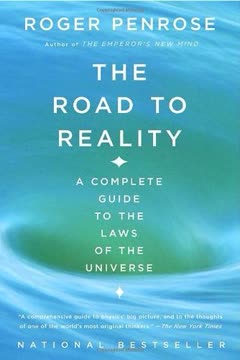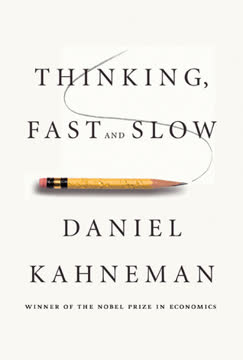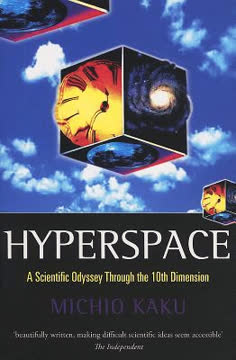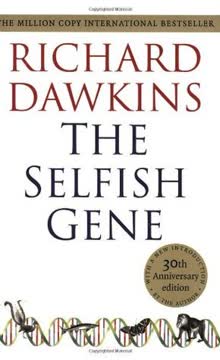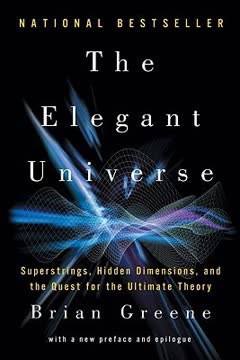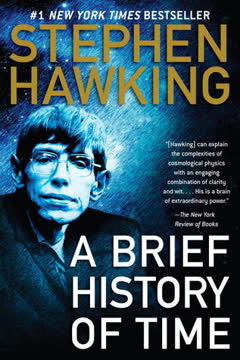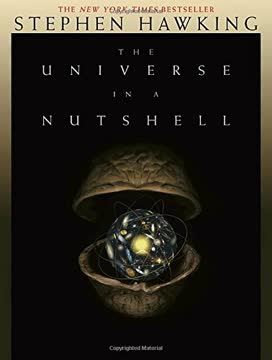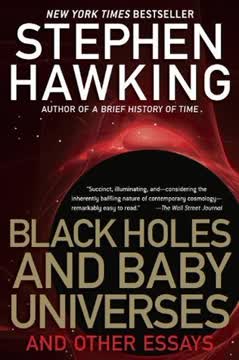النقاط الرئيسية
١. الزمن والمكان ليسا مطلقين
"كان يُنظر إلى الزمن كما لو كان خط سكة حديد مستقيم يمكن السير فيه في اتجاه واحد فقط."
وجهة نظر ثورية. نظرية النسبية لأينشتاين غيرت جذريًا فهمنا للزمن والمكان من مفاهيم مطلقة وثابتة إلى أبعاد نسبية وديناميكية يمكن أن يختبرها مراقبون مختلفون بطرق مختلفة.
التبعات الأساسية:
- الزمن ليس عالميًا بل شخصي لكل مراقب
- المراقبون الذين يتحركون بسرعات مختلفة يقيسون الزمن بشكل مختلف
- سرعة الضوء ثابتة لجميع المراقبين
الأدلة التجريبية. تجارب مثل تجربة ميكلسون-مورلي أظهرت أن سرعة الضوء ثابتة بغض النظر عن حركة المراقب، مما تحدى المفاهيم الكلاسيكية للزمن والمكان المطلقين.
٢. الكون له بداية وطبيعة متوسعة
"لو أن الكون خُلق بدون مبدأ الاستبعاد، لما تشكلت الكواركات إلى بروتونات ونيوترونات منفصلة ومحددة."
نظرية الانفجار العظيم. نشأ الكون من حالة شديدة الكثافة والحرارة قبل نحو ١٣.٨ مليار سنة، وبدأ في التوسع بسرعة، متطورًا عبر عمليات فيزيائية معقدة أدت في النهاية إلى تكوين المجرات والنجوم والهياكل المعقدة.
تطور الكون:
- الحالة الأولية كانت شديدة الحرارة ومتجانسة
- التبريد التدريجي سمح بتكوين الهياكل الذرية
- التوسع مستمر وربما إلى الأبد
- تشكلت المجرات بفعل الجاذبية
التأكيد الرصدي. اكتشاف إدوين هابل أن المجرات البعيدة تبتعد عنا قدم دليلًا تجريبيًا على نموذج الكون المتوسع.
٣. ميكانيكا الكم تقدم عدم يقين واحتمالية
"ميكانيكا الكم لا تتنبأ بنتيجة واحدة محددة للملاحظة، بل تتنبأ بعدة نتائج محتملة وتخبرنا باحتمالية كل منها."
كون احتمالي. على عكس الفيزياء الكلاسيكية، تشير ميكانيكا الكم إلى أن الجسيمات الأساسية توجد في حالات احتمالية متعددة، مع نتائج محتملة مختلفة لأي ملاحظة.
المبادئ الكمومية الأساسية:
- يمكن للجسيمات أن توجد في حالات متعددة في آن واحد
- الملاحظة تؤثر على حالة الجسيمات
- القياس الدقيق للموقع والسرعة مستحيل
- العشوائية جزء جوهري من الطبيعة
التبعات الثورية. هذا النهج يتحدى النظرة الحتمية للكون، مقترحًا أن عدم اليقين الأساسي هو سمة جوهرية للواقع.
٤. الجاذبية تشكل بنية الكون
"الجاذبية هي أضعف القوى الأربع بفارق كبير؛ فهي ضعيفة جدًا لدرجة أننا لن نلاحظها لولا خاصيتين مميزتين: يمكنها أن تؤثر عبر مسافات كبيرة، وهي دائمًا جاذبة."
تأثير الجاذبية. رغم كونها أضعف القوى الأساسية، تلعب الجاذبية دورًا حاسمًا في تشكيل الهياكل الكونية من خلال تأثيراتها التراكمية طويلة المدى.
خصائص الجاذبية:
- تؤثر على كل المادة في الكون
- تجذب ولا تدفع
- تحدد الهياكل الكونية على نطاق واسع
- أساسية لفهم الثقوب السوداء وتطور الكون
مساهمة أينشتاين. كشفت النسبية العامة أن الجاذبية هي انحناء في الزمكان، محولة فهمنا من قوة إلى خاصية هندسية للكون.
٥. الثقوب السوداء ليست سوداء حقًا
"الثقوب السوداء هي واحدة من الحالات القليلة في تاريخ العلم التي تم فيها تطوير نظرية مفصلة كنموذج رياضي قبل وجود أي دليل رصدي."
خصائص الثقوب السوداء الكمومية:
- تصدر إشعاعًا (إشعاع هوكينغ)
- لها درجة حرارة محدودة
- يمكن أن تتبخر تدريجيًا
- تمثل بيئات جاذبية قصوى
اختراق نظري. أظهر عمل هوكينغ أن ميكانيكا الكم تسمح للثقوب السوداء بإصدار جسيمات، متحدية الفهم السابق لهذه الظواهر الكونية.
الأهمية الرصدية. توفر الثقوب السوداء مختبرات فريدة لاختبار النظريات الفيزيائية الأساسية حول الجاذبية وميكانيكا الكم والزمكان.
٦. القوى الأساسية يمكن توحيدها
"في النهاية، يأمل المرء في إيجاد نظرية كاملة ومتسقة وموحدة تشمل كل هذه النظريات الجزئية كاقترابات."
سعي التوحيد. يسعى العلماء إلى نظرية شاملة تدمج الجاذبية والقوى الكهرومغناطيسية والقوى النووية القوية والضعيفة في إطار واحد متماسك.
النهج النظرية:
- نظرية الأوتار
- نماذج الجاذبية الكمومية
- النظريات الموحدة الكبرى
- استكشاف الأبعاد الإضافية
التحديات. تواجه النظريات الحالية صعوبة في التوفيق الكامل بين ميكانيكا الكم وتأثيرات الجاذبية على المستويات الدقيقة.
٧. سهم الزمن والانتروبيا
"تزداد الفوضى مع مرور الزمن لأننا نقيس الزمن في الاتجاه الذي تزداد فيه الفوضى."
اتجاه الزمن الحراري. يميل الكون نحو زيادة الفوضى، مما يخلق "سهم الزمن" الأساسي الذي يميز الماضي عن المستقبل.
أسهم الزمن الرئيسية:
- سهم الديناميكا الحرارية (زيادة الانتروبيا)
- السهم النفسي (تقدم الذاكرة)
- السهم الكوني (توسع الكون)
التبعات الفلسفية. إدراكنا وتجربتنا للزمن مرتبطان جوهريًا باتجاه الكون نحو تعقيد وعشوائية أكبر.
٨. قد يكون الكون مكتفيًا ذاتيًا
"الكون سيكون مكتفيًا ذاتيًا تمامًا وغير متأثر بأي شيء خارجه. لن يُخلق ولا يُدمر. سيكون فقط موجودًا."
اقتراح بلا حدود. قد يوجد الكون دون سبب خارجي، ناشئًا من تقلبات كمومية مع اتساق رياضي جوهري.
الاعتبارات النظرية:
- قد يكون الزمكان محدودًا لكنه بلا حدود
- لا حاجة لخالق خارجي
- تحكمه قوانين رياضية ذاتية
وجهة نظر جذرية. تتحدى النظريات التقليدية الدينية والفلسفية حول أصول الكون.
٩. النظريات العلمية نماذج رياضية للملاحظة
"النظرية العلمية ليست سوى نموذج رياضي نصنعه لوصف ملاحظاتنا: إنها موجودة فقط في أذهاننا."
منهجية علمية. تمثل النظريات محاولات بشرية لوصف الظواهر المرصودة رياضيًا والتنبؤ بها، مع الاعتراف بطبيعتها المؤقتة والمتطورة.
خصائص النظرية:
- قدرات تنبؤية
- قابلية للاختبار التجريبي
- قابلة للمراجعة
- تقريب للواقع
تواضع معرفي. يعترف بأن المعرفة العلمية عملية مستمرة للفهم وليست حقيقة مطلقة.
١٠. الوجود البشري حادثة كونية مذهلة
"الحقيقة المذهلة هي أن قيم هذه الأعداد تبدو مضبوطة بدقة فائقة لجعل تطور الحياة ممكنًا."
المبدأ الأنثروبي. وجودنا يعتمد على تكوين دقيق للغاية للثوابت والقوانين الفيزيائية الكونية.
الاحتمالية الكونية:
- تغييرات طفيفة في الثوابت الأساسية تمنع الحياة
- الهياكل المعقدة تنشأ من ظروف بسيطة في البداية
- الوعي البشري يمثل نتيجة كونية غير محتملة
تأمل فلسفي. يبرز كلًا من العشوائية والإمكانية المقصودة في تصميم كوننا.
آخر تحديث::
FAQ
What's "A Brief History of Time" about?
- Exploration of the Universe: "A Brief History of Time" by Stephen Hawking explores the nature of the universe, discussing its origins, structure, and eventual fate.
- Complex Concepts Simplified: The book aims to explain complex scientific concepts like black holes, the big bang, and quantum mechanics in a way that is accessible to non-scientists.
- Unified Theory: Hawking discusses the quest for a unified theory that combines general relativity and quantum mechanics to explain all physical aspects of the universe.
- Philosophical Implications: It also delves into the philosophical implications of scientific discoveries, questioning the role of God and the nature of time.
Why should I read "A Brief History of Time"?
- Understanding the Universe: It provides a comprehensive overview of the universe's workings, making it essential for anyone interested in cosmology and physics.
- Accessible Science: Hawking's ability to simplify complex ideas makes it a great read for those without a scientific background.
- Intellectual Curiosity: The book challenges readers to think about profound questions regarding existence, time, and the universe.
- Cultural Impact: As a bestseller, it has influenced both scientific and popular culture, making it a significant work in modern literature.
What are the key takeaways of "A Brief History of Time"?
- Nature of Time: Time is not absolute and is intertwined with space, forming a four-dimensional space-time continuum.
- Black Holes: Black holes are regions where gravity is so strong that nothing, not even light, can escape, and they can emit radiation.
- Big Bang Theory: The universe began with a big bang, a singularity where all known laws of physics break down.
- Unified Theory: The search for a unified theory that combines general relativity and quantum mechanics is ongoing and crucial for understanding the universe.
What are the best quotes from "A Brief History of Time" and what do they mean?
- "If time travel is possible, where are the tourists from the future?" This quote highlights the paradoxes and challenges associated with the concept of time travel.
- "The universe doesn't allow perfection." It suggests that imperfections and uncertainties are inherent in the universe, aligning with the principles of quantum mechanics.
- "The boundary condition of the universe is that it has no boundary." This reflects Hawking's no-boundary proposal, suggesting the universe is finite but without edges or singularities.
- "We are just an advanced breed of monkeys on a minor planet of a very average star." This quote emphasizes the insignificance of human existence in the vast universe.
How does Stephen Hawking explain black holes in "A Brief History of Time"?
- Definition and Nature: Black holes are regions in space where gravity is so strong that nothing can escape from them, not even light.
- Event Horizon: The boundary around a black hole is called the event horizon, beyond which nothing can return.
- Hawking Radiation: Hawking theorizes that black holes can emit radiation due to quantum effects near the event horizon, leading to their eventual evaporation.
- Singularity: At the center of a black hole lies a singularity, a point of infinite density where the laws of physics as we know them cease to function.
What is the significance of the big bang theory in "A Brief History of Time"?
- Origin of the Universe: The big bang theory posits that the universe began from an extremely hot and dense singularity and has been expanding ever since.
- Cosmic Microwave Background: The theory is supported by the discovery of cosmic microwave background radiation, the afterglow of the big bang.
- Time and Space: It suggests that time and space themselves began with the big bang, challenging the notion of a universe existing eternally.
- Scientific and Philosophical Impact: The big bang theory has profound implications for understanding the universe's origin and the nature of time.
How does "A Brief History of Time" address the concept of time?
- Relative Time: Time is not absolute but relative, varying for different observers depending on their velocity and gravitational field.
- Imaginary Time: Hawking introduces the concept of imaginary time, which is indistinguishable from directions in space and helps in understanding the universe's boundaries.
- Arrow of Time: The book discusses the thermodynamic, psychological, and cosmological arrows of time, explaining why time seems to move in one direction.
- Time's Beginning and End: It explores the idea that time began with the big bang and may end with the big crunch or in black holes.
What is the role of quantum mechanics in "A Brief History of Time"?
- Uncertainty Principle: Quantum mechanics introduces uncertainty, meaning we cannot predict exact outcomes, only probabilities.
- Wave-Particle Duality: Particles can exhibit properties of both waves and particles, challenging classical physics' distinct categories.
- Quantum Gravity: The book discusses the need to unify quantum mechanics with general relativity to form a complete theory of quantum gravity.
- Impact on Cosmology: Quantum mechanics plays a crucial role in understanding the early universe and phenomena like black hole radiation.
How does Stephen Hawking approach the search for a unified theory in "A Brief History of Time"?
- Grand Unified Theories (GUTs): Hawking discusses attempts to unify the electromagnetic, weak, and strong nuclear forces into a single framework.
- Challenges with Gravity: The main challenge is incorporating gravity, described by general relativity, with quantum mechanics.
- String Theory: The book explores string theory as a potential candidate for a unified theory, where particles are one-dimensional strings.
- Ultimate Goal: The search for a unified theory aims to provide a complete understanding of the universe's fundamental forces and particles.
What is the anthropic principle as discussed in "A Brief History of Time"?
- Weak Anthropic Principle: It suggests that the universe's laws appear fine-tuned for life because only in such a universe could observers like us exist.
- Strong Anthropic Principle: This version posits that the universe must have properties that allow life to develop at some stage in its history.
- Role in Cosmology: The anthropic principle is used to explain why the universe has the conditions necessary for life, despite the vast number of possible configurations.
- Philosophical Implications: It raises questions about the role of chance and necessity in the universe's design and our place within it.
How does "A Brief History of Time" address the concept of imaginary time?
- Mathematical Tool: Imaginary time is used as a mathematical tool to simplify calculations in quantum mechanics and cosmology.
- No Boundary Proposal: Hawking's no boundary proposal uses imaginary time to suggest that the universe is finite but without boundaries or singularities.
- Distinction from Real Time: In imaginary time, the distinction between past and future disappears, unlike in real time, where time has a clear direction.
- Implications for the Universe: Imaginary time allows for a universe that is self-contained and without a beginning or end, challenging traditional notions of creation.
What are the philosophical implications of "A Brief History of Time"?
- Role of God: The book questions the necessity of a creator if the universe can be explained by a self-contained set of laws.
- Nature of Reality: It challenges traditional views of reality, suggesting that time and space are not absolute and may have different properties than perceived.
- Human Significance: Hawking emphasizes the insignificance of human life in the vast universe, prompting reflection on our place and purpose.
- Quest for Knowledge: The pursuit of a unified theory represents humanity's ongoing quest to understand the universe and our existence within it.
مراجعات
كتاب "تاريخ موجز للزمن" هو كتاب علمي شعبي يشرح مفاهيم فيزيائية معقدة مثل النسبية، والميكانيكا الكمومية، وعلم الكونيات بأسلوب مبسط يناسب الجمهور العام. وعلى الرغم من الثناء على سهولة فهمه، إلا أن بعض القراء وجدوا أجزاءً منه صعبة الاستيعاب بشكل كامل. يتميز الكتاب بأسلوب هيوكينغ الواضح ومحاولاته للإجابة عن أسئلة عميقة تتعلق بالكون. يتناول الكتاب موضوعات مثل الثقوب السوداء، والانفجار العظيم، والبحث عن نظرية فيزيائية موحدة. وقد تعرضت بعض تأملات هيوكينغ الفلسفية للنقد، إلا أن الكتاب كان له تأثير كبير في نشر الفيزياء الحديثة بين الناس.
Similar Books
